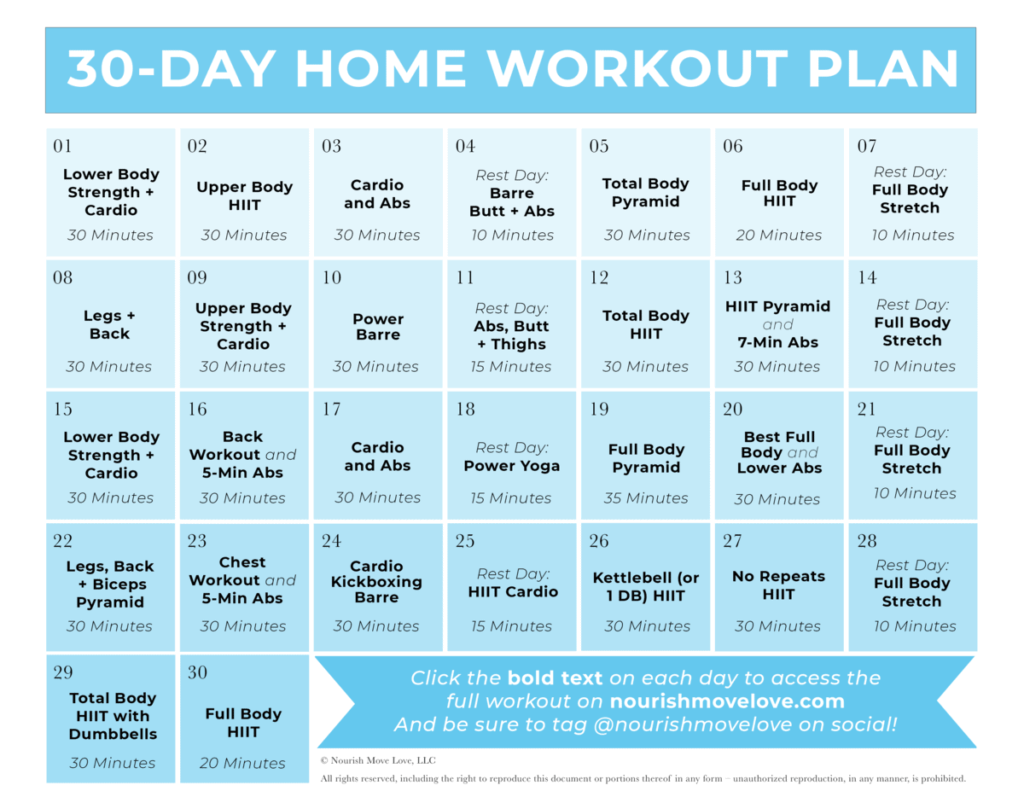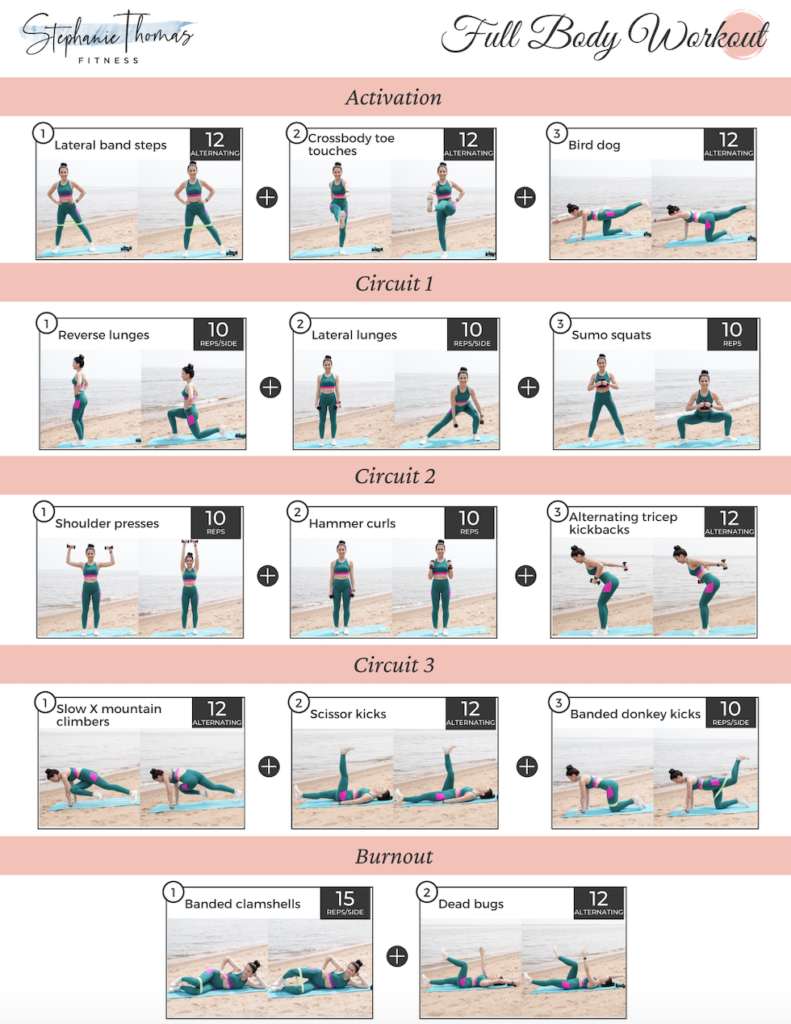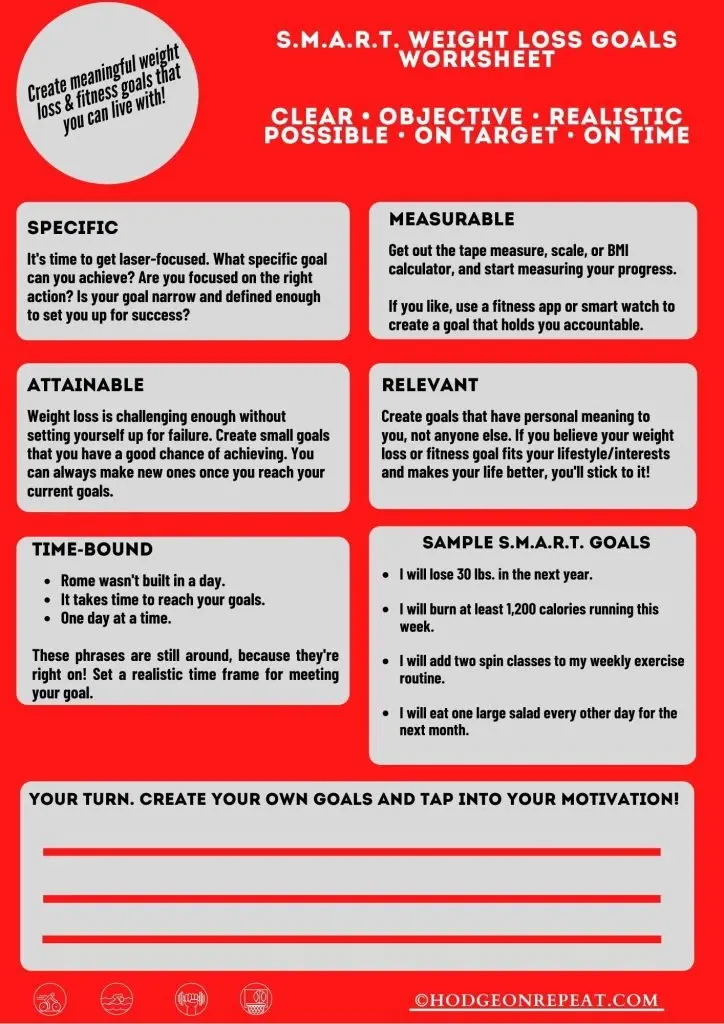If you’ve been wondering about the perfect workout schedule to follow from the comfort of your own home, then look no further! In this article, we will explore the different elements that make up a good workout schedule and provide you with some practical tips to help you stay motivated and achieve your fitness goals. Whether you’re a beginner or a seasoned fitness enthusiast, we’ve got you covered with a variety of exercises and routines that can be easily incorporated into your daily routine. So, let’s get started and discover how you can create an effective workout schedule that fits seamlessly into your home life!
What is a good workout schedule at home?
When it comes to maintaining a healthy lifestyle, finding a good workout schedule is crucial. Especially when you are exercising at home, where distractions can easily creep in, having a structured routine is essential to ensure consistency and maximize your fitness gains. In this article, we will explore the various aspects of creating an effective workout schedule at home, from determining your fitness goals to considering factors such as time availability, personal preferences, and fitness level. Additionally, we will provide sample workout schedules targeting different muscle groups and cardiovascular health. So grab your water bottle and let’s dive in!
1. Fitness Goals
1.1 Determining your fitness goals
Before you embark on creating a workout schedule, it is important to determine your fitness goals. What do you want to achieve through your workouts? Do you aim to lose weight, build muscle, improve flexibility, or enhance cardiovascular endurance? Clearly defining your goals will help shape your workout routine and ensure that you are working towards something meaningful.
1.2 Types of fitness goals
Fitness goals can be broadly categorized into three main types: strength-based, endurance-based, and aesthetic-based goals. Strength-based goals focus on building strength and increasing muscle mass. Endurance-based goals center around improving cardiovascular fitness and stamina. Aesthetic-based goals involve shaping and toning specific muscle groups for a desired body physique. Identifying which category your fitness goals fall into will further assist in crafting an effective workout schedule.

This image is property of www.nourishmovelove.com.
2. Importance of a Workout Schedule
2.1 Structured routine for consistency
One of the key benefits of following a workout schedule is consistency. By establishing a regular routine, you can ensure that you consistently engage in physical activity, which is crucial for achieving long-term fitness goals. Tackling your workouts in a structured manner also helps to overcome the common pitfalls of procrastination and lack of motivation, as you will have a set plan to follow.
2.2 Balancing different exercise types
A well-rounded workout schedule should include a balance of different exercise types to target different muscle groups and energy systems. This is important to prevent muscle imbalances, reduce the risk of overuse injuries, and promote overall strength and mobility. By carefully planning your workouts, you can incorporate a variety of exercises such as strength training, cardiovascular workouts, and flexibility exercises into your routine.
2.3 Maximizing time and efficiency
Another advantage of having a workout schedule is the ability to maximize your time and efficiency. By planning your workouts in advance, you can ensure that you are utilizing the available time to its fullest potential. Additionally, a well-structured schedule allows you to seamlessly transition between different exercises, minimizing downtime and optimizing the overall effectiveness of your workouts.
3. Factors to Consider
3.1 Time availability
When designing a workout schedule at home, it is crucial to consider your time availability. Assess how much time you can dedicate to exercise each day or week and plan your workouts accordingly. Remember, it is better to have shorter, consistent workouts than long, sporadic ones. If you have a tight schedule, consider incorporating high-intensity interval training (HIIT) or circuit training into your routine for a quick but effective workout.
3.2 Personal preferences and interests
Your personal preferences and interests play a significant role in maintaining a consistent workout schedule. If you enjoy a particular type of exercise, you are more likely to stick to a routine that includes it. Whether it’s dancing, yoga, or weightlifting, incorporating activities that you genuinely enjoy will not only make your workouts more enjoyable but also increase your long-term adherence to your schedule.
3.3 Fitness level and experience
Your fitness level and experience should also be taken into account when creating a workout schedule. If you are a beginner, it is important to start with manageable workouts and gradually progress as your strength and endurance improve. On the other hand, if you are more experienced, you may need to challenge yourself with more advanced exercises or higher intensity routines. Adjusting your schedule to match your fitness level will prevent injury and promote steady progress.
3.4 Equipment and space
Consider the availability of equipment and space when designing your workout schedule at home. If you have access to a treadmill or dumbbells, you can include exercises that utilize these tools in your routine. If you have limited space, bodyweight exercises or workouts that require minimal equipment may be more suitable. Adapting your schedule based on the equipment and space you have will ensure that you can comfortably perform your workouts at home.

This image is property of www.nourishmovelove.com.
4. Sample Workout Schedules
Now, let’s delve into some sample workout schedules that can be conveniently followed at home. These schedules are categorized based on the type of workout they focus on, such as full-body workouts, targeted muscle group workouts, and cardiovascular workouts.
4.1 Full Body Workouts
Full-body workouts are ideal for individuals looking to improve overall strength and fitness. These routines engage multiple muscle groups simultaneously, maximizing the efficiency of your workouts. Here are a few examples of full-body workout schedules:
4.1.1 HIIT Workouts
High-Intensity Interval Training (HIIT) is a popular and effective way to burn calories, boost cardiovascular fitness, and improve muscular endurance. A sample HIIT workout schedule could include three sessions per week, alternating between different exercises such as burpees, jump squats, mountain climbers, and planks. Perform each exercise for a specific duration (e.g., 30 seconds) with short rest periods in between.
4.1.2 Circuit Training
Circuit training involves completing a series of exercises consecutively, targeting different muscle groups, with minimal rest between each exercise. A circuit training schedule could include two to three sessions per week, alternating between exercises like push-ups, lunges, bicep curls, and planks. Perform each exercise for a specific number of repetitions or time, and aim to complete multiple circuits in each session.
4.1.3 Strength Training
Strength training focuses on building muscle and increasing strength. A sample strength training schedule could involve training different muscle groups on separate days, such as upper body exercises on Mondays and Thursdays, lower body exercises on Tuesdays and Fridays, and core exercises on Wednesdays and Saturdays. Perform exercises like bench presses, squats, deadlifts, push-ups, and planks, aiming for two to three sets of 8-12 repetitions for each exercise.
4.2 Targeted Muscle Group Workouts
Targeted muscle group workouts are designed to isolate and strengthen specific muscle groups. These workouts are particularly beneficial for individuals looking to tone and shape specific areas of their body. Here are some examples of targeted muscle group workout schedules:
4.2.1 Upper Body Workouts
An upper body workout schedule could involve training different upper body muscle groups on separate days. For example, on Mondays and Thursdays, focus on exercises like push-ups, shoulder presses, bent-over rows, and tricep dips. On Wednesdays and Saturdays, perform exercises such as bicep curls, lateral raises, pull-ups, and chest flyes. Aim for two to three sets of 8-12 repetitions for each exercise.
4.2.2 Lower Body Workouts
A lower body workout schedule could include exercises that target the glutes, quadriceps, hamstrings, and calves. For instance, on Tuesdays and Fridays, perform squats, lunges, deadlifts, calf raises, and hip thrusts. Aim for two to three sets of 8-12 repetitions for each exercise.
4.2.3 Core Workouts
Core workouts are essential for building a strong and stable midsection. A core workout schedule could involve training different core muscles on separate days. For example, on Wednesdays and Saturdays, perform exercises like planks, Russian twists, bicycle crunches, and leg raises. Aim for two to three sets of 8-12 repetitions for each exercise.
4.3 Cardiovascular Workouts
Cardiovascular workouts are crucial for improving cardiovascular health, increasing endurance, and burning calories. Here are some examples of cardiovascular workout schedules:
4.3.1 Aerobic Exercises
Aerobic exercises can be incorporated into your workout schedule by dedicating specific days to activities such as brisk walking, jogging, cycling, or swimming. Aim for at least three to four days per week or a minimum of 150 minutes of moderate aerobic activity per week.
4.3.2 Dance Workouts
Dance workouts are a fun and enjoyable way to get your heart rate up. You can follow online dance tutorials or join virtual dance classes. Include dance workouts in your schedule for at least two to three days per week, with each session lasting around 30-60 minutes.
4.3.3 Interval Training
Interval training combines periods of high-intensity exercises with short rest intervals. This type of workout can be performed using various activities such as running, cycling, or bodyweight exercises. Incorporate interval training into your schedule twice a week, with each session consisting of 20-30 minutes of work and rest intervals.
5. Incorporating Rest Days
While it may be tempting to workout every day, it is essential to incorporate rest days into your schedule. Rest days allow your muscles to recover and rebuild, reducing the risk of overuse injuries and promoting long-term progress. Depending on your fitness level, aim for at least one to two rest days per week. On these days, focus on light activities such as stretching or gentle yoga to promote mobility and relaxation.

This image is property of www.austinfitmagazine.com.
6. Monitoring and Evaluating Progress
To ensure that your workout schedule is effective, it is essential to monitor and evaluate your progress regularly. Here are a couple of strategies to consider:
6.1 Tracking workouts
Keep a workout journal or use a fitness tracking app to record your workouts, including the exercises performed, sets, repetitions, and intensity level. This will help you stay accountable and track your progress over time, making it easier to identify areas of improvement or potential modifications to your schedule.
6.2 Adjustments and modifications
Periodically evaluate your workout schedule and make adjustments as needed. As you progress in your fitness journey, you may need to increase the intensity, add new exercises, or change the frequency of your workouts. Listen to your body and be open to modifications to ensure continued progress and prevent plateauing.
By following these guidelines, you can create a workout schedule that aligns with your goals, preferences, and fitness level. Remember that consistency is key, and finding enjoyment in your workouts will make the journey towards a healthier and fitter lifestyle much more enjoyable. So, lace up those sneakers, create your own workout schedule, and embrace the incredible benefits of exercising from the comfort of your own home!
